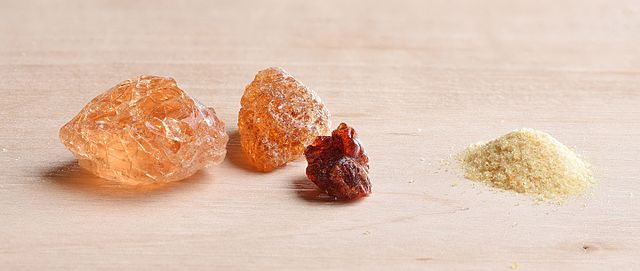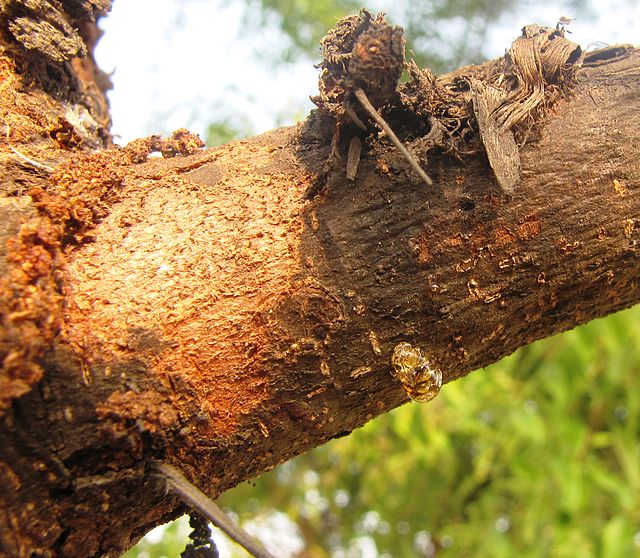Gouache, body color, or opaque watercolor is a water-medium paint consisting of natural pigment, water, a binding agent, and sometimes additional inert material. Gouache is designed to be opaque. Gouache has a long history, having been used for at least twelve centuries. It is used most consistently by commercial artists for posters, illustrations, comics, and other design work.
Gouache paints come in many colors and are usually mixed with water to achieve the desired working properties and to control the opacity when dry.
Jacob Philipp Hackert, Lago d'Averno, 1794
12th-century Buddhist manuscript, India
Asphodelus ramosus by Hans Simon Holtzbecker, 1649–1659, gouache on parchment, 50.5 cm × 38.5 cm (20 in × 15+1⁄4 in)
Gum arabic is a natural gum originally consisting of the hardened sap of two species of the Acacia tree, Senegalia senegal and Vachellia seyal. However, the term "gum arabic" does not actually indicate a particular botanical source. The gum is harvested commercially from wild trees, mostly in Sudan and throughout the Sahel, from Senegal to Somalia. The name "gum Arabic" was used in the Middle East at least as early as the 9th century. Gum arabic first found its way to Europe via Arabic ports, and so retained its name.
Acacia gum, pieces and powder
Acacia senegal, pictured in the medicinal handbook Köhler's Medizinal-Pflanzen (1887) by Franz Eugen Köhler
Gum arabic exuding from Acacia nilotica
A selection of gouaches, some containing gum arabic







